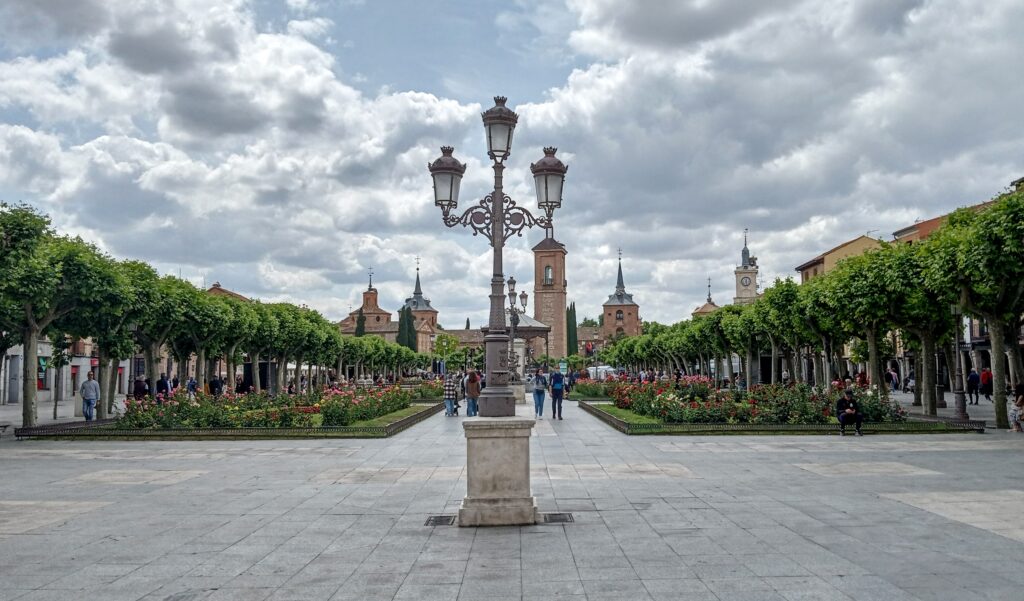
Madrid is a vibrant and regal city with enough fabulous things to keep you entertained for the rest of your life. I lived there for a year and have barely scratched the surface.
But with over 3 million inhabitants and what seems like just as many tourists, it is crowded. All. The. Time.
As much as I love the bustle of Madrid, sometimes I just need to get out of town. Luckily, there are so many amazing places near the big city!
Toledo and Segovia seem to get all the attention from Madrid’s guidebooks and tour programs. While you cannot beat Toledo’s winding Medieval streets or Segovia’s magnificent aqueduct, there are other places in and around the capital city where you can see top-notch historic sights and experience the best of Spanish life.
And this is one of them. Alcalá de Henares.
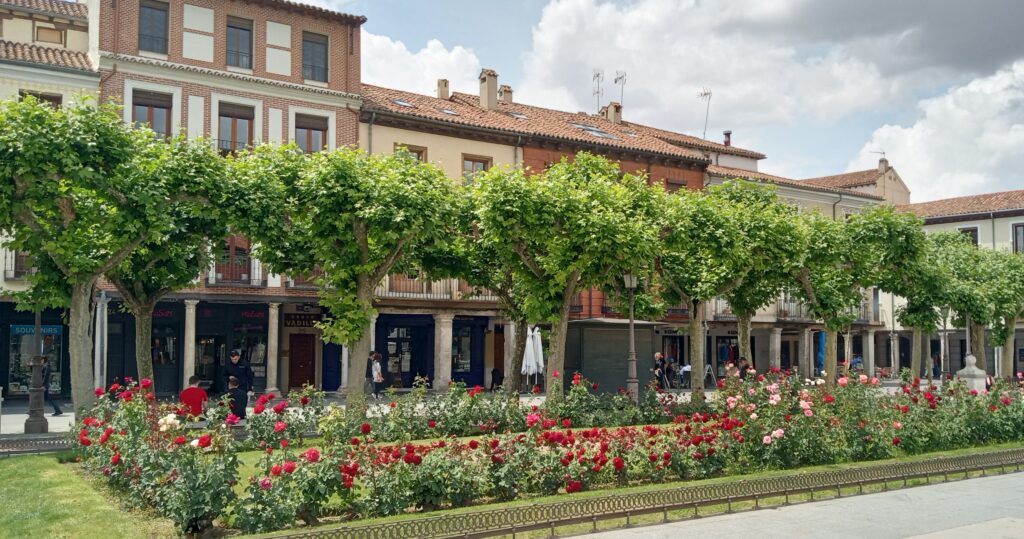
I fell in love with Alcalá de Henares the moment I stepped into its old town. And it is one of my top days out from Madrid!
An easy and direct 35-minute ride on the Cercanías commuter train (line C2 or C7) from Atocha Station will get you to the modern center of Alcalá de Henares. And a quick 10-minute walk will get you to the heart of the old town. Just follow the signs from the station.
This UNESCO Heritage Site’s claim to fame is that it is the birthplace of Don Quixote author, Miguel de Cervantes, born here in 1547. And there are odes to him all over town. Another famous historical figure was also born here. Catherine of Aragon. She gets less fanfare, but keep an eye out for a statue of her.
There is a lot to see and do in Alcalá de Henares. So, here is a list of some of my favourites!
Plaza de Cervantes
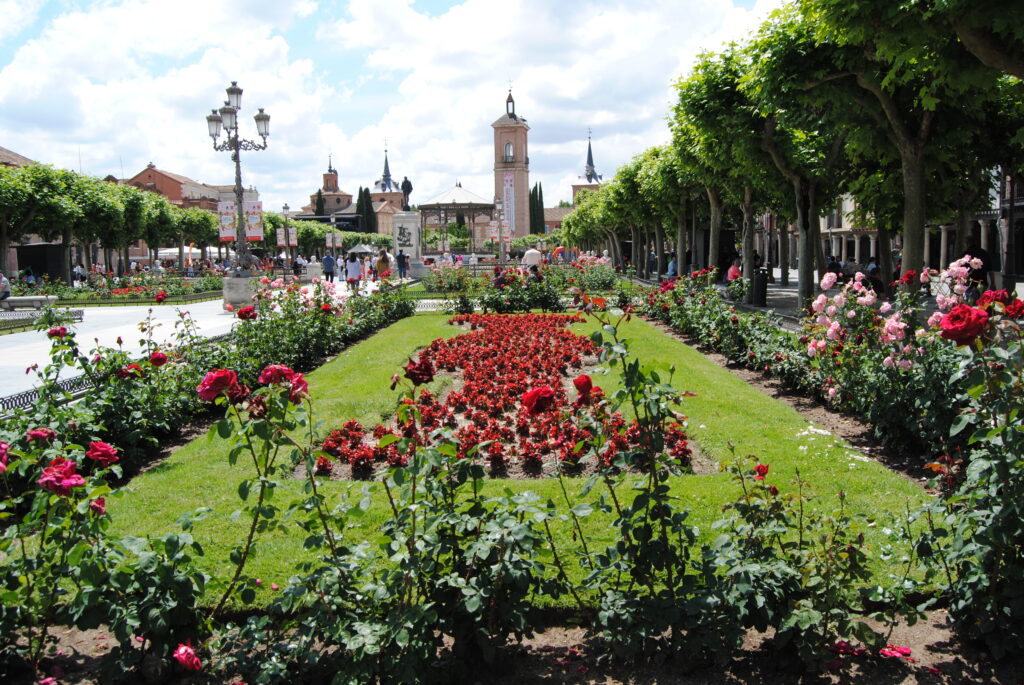
Within a few steps of entering the old town, you will be welcomed by the magnificent Plaza de Cervantes, with a statue of the man himself watching over the action.
Historic buildings and an old market arcade of shops surround the square and gardens. My first stop is always Valor for churros con chocolate. It’s the perfect place to grab a seat and enjoy the scene.
The Plaza de Cervantes is the center of social and cultural life in Alcalá de Henares. All year round, there are festivals, concerts, and markets to enjoy. Most importantly, the plaza comes alive every October for the Semana Cervantina, a week-long program of theatre, dance, music, and Medieval games celebrating the baptism of the city’s most famous son.
Torre de Santa María
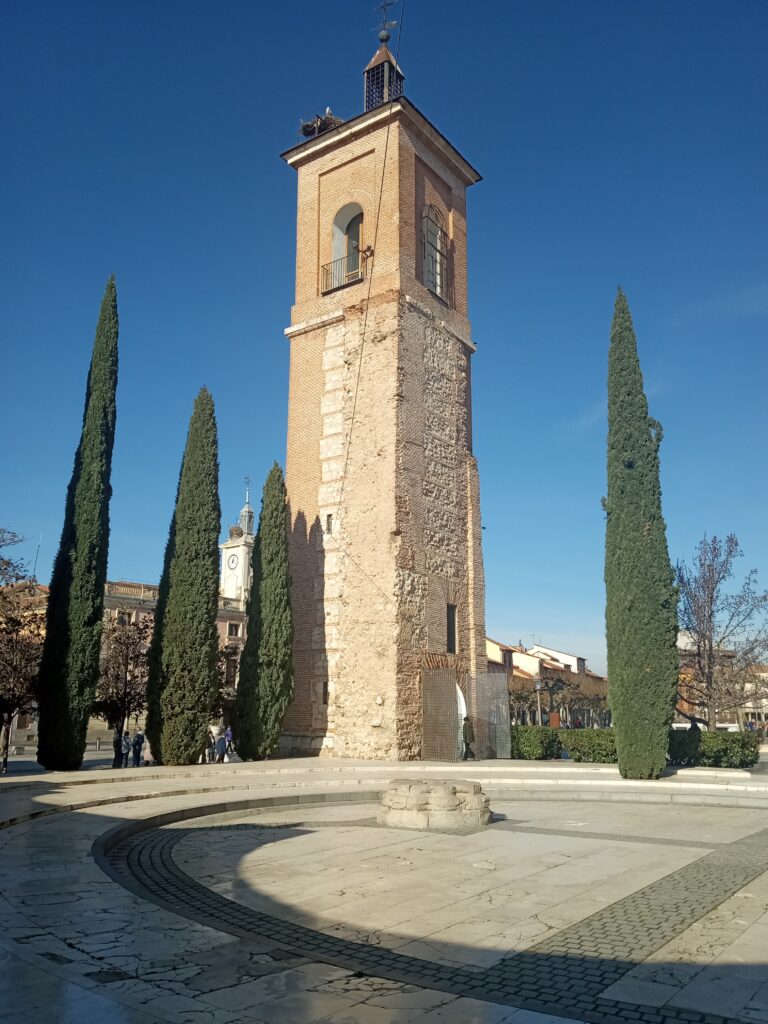
I get a little queasy when it comes to heights. But, if I don’t push through, I will miss wonderful things. Hanging on for dear life up 109 winding steps, I climbed to the top of the Santa María tower and was rewarded with a spectacular view of centuries of architecture and the surrounding mountains.
Now all by its lonesome, this tower was once part of the Church of Santa María la Mayor, that was bombed and destroyed at the beginning of the Civil War.
Near the tower is the Capilla del Oidor. This houses the font where Cervantes was baptized in October of 1547, giving the plaza even more significance. It is also the city’s tourist office.
Calle Mayor
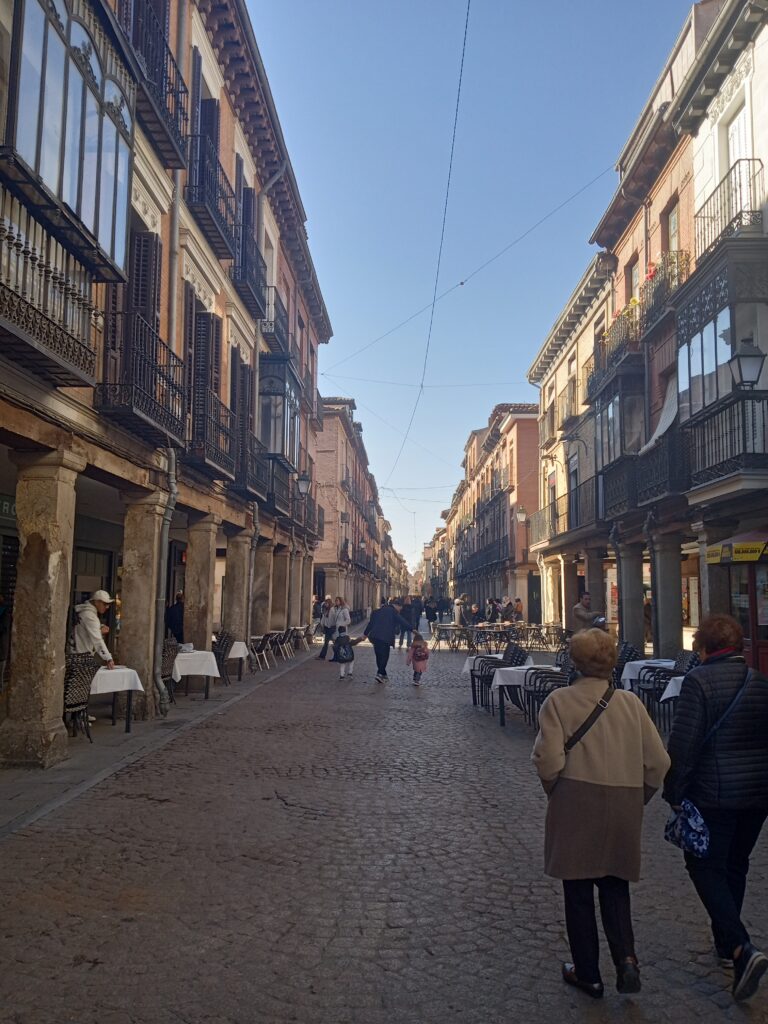
One of Europe’s longest arcaded streets, Calle Mayor is a delight for shopping, eating and strolling.
Calle Mayor was built to follow the Roman Road. During the Middle Ages, shops and workshops were on the bottom level, while homes were on the upper floors. It was the Jewish center of the city until 1492 when the Jews were expelled from Spain.

The covered arcade was important to Alcalá’s merchants as they could safely display their wares outside. I’m sure today’s shopkeepers and restaurateurs are also grateful for this.
Cervantes Birthplace
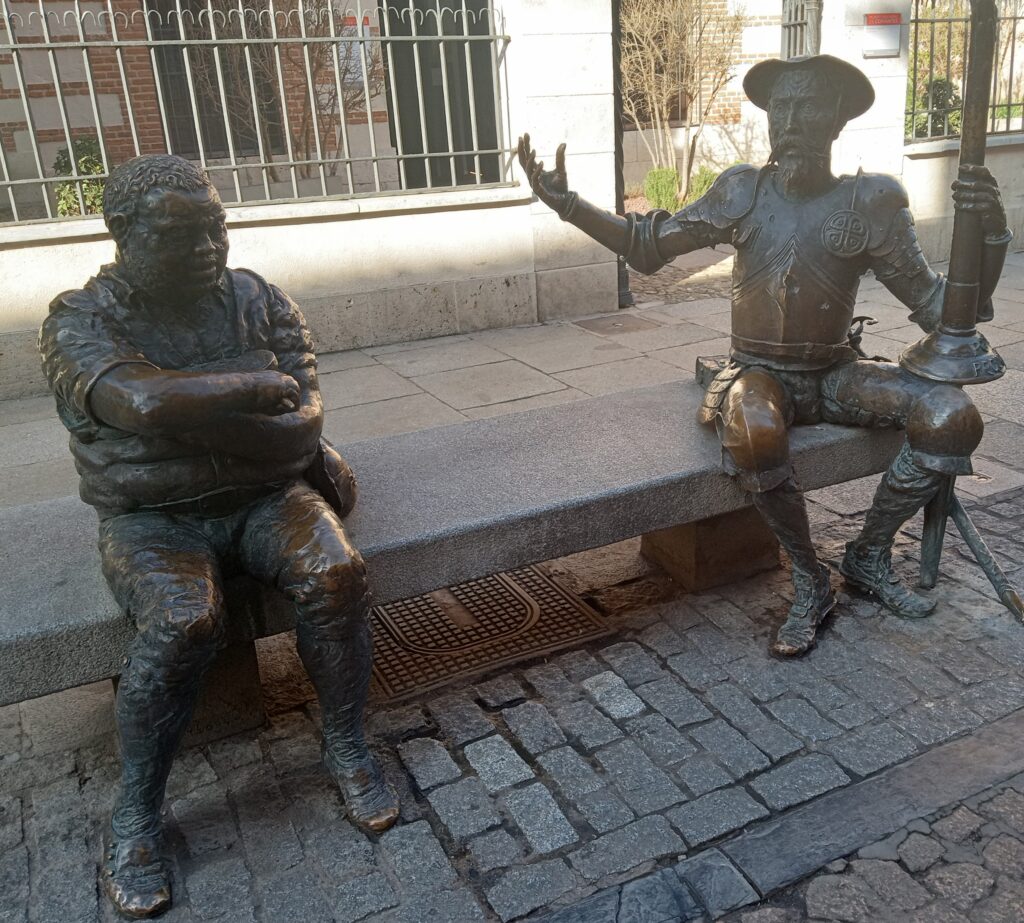
As you’re busy enjoying Calle Mayor’s shops and restaurants (Palki is my favourite for Indian food!), you will stumble upon this lovely little house.
This home is on the site where the famous author Miguel de Cervantes was born and spent his early years with his wealthy family.

It is free to enter and visitors can tour each decorated room, lovingly recreated to reflect what life would have been like in this home during the 16th and 17th Centuries.
In addition to showcasing historic furniture and decor, this museum hosts interesting exhibitions about books and writing during Cervantes’ time. It also has a fascinating room dedicated to puppetry.
The Archiepiscopal Palace
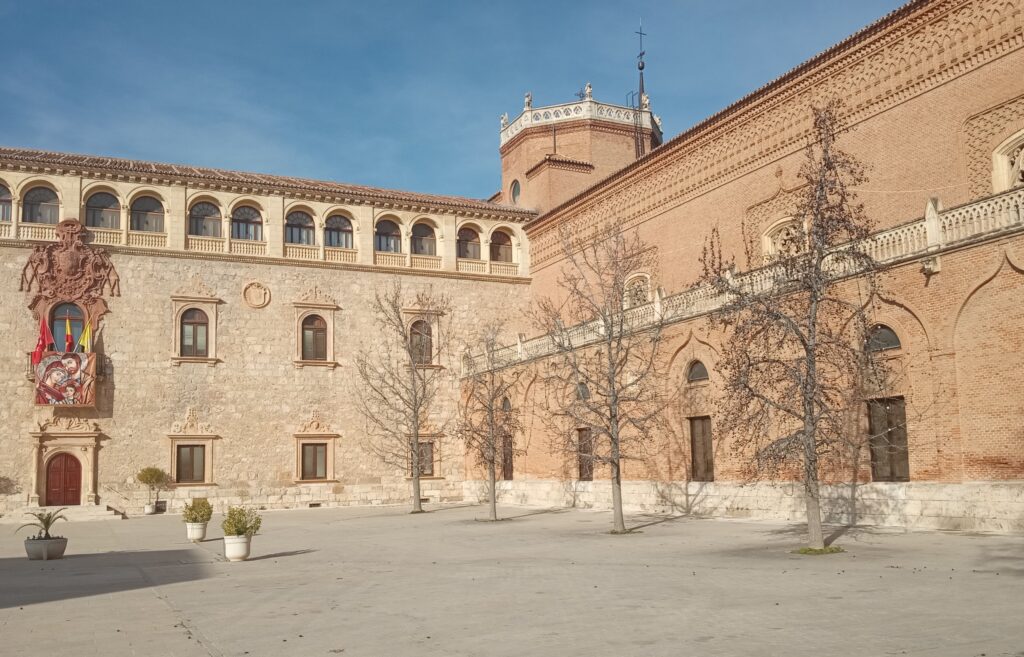
Constructed in 1209, this palace began as a Mudéjar fortress and has undergone numerous deaths and rebirths to make it what it is today. The part of the building we see now is all that is left intact from a fire that occurred in 1939, during the Spanish Civil War.
This palace has been the residence and meeting place of archbishops and royalty. But, most famously, it’s the birthplace of Catherine of Aragon, Henry VIII’s first wife.
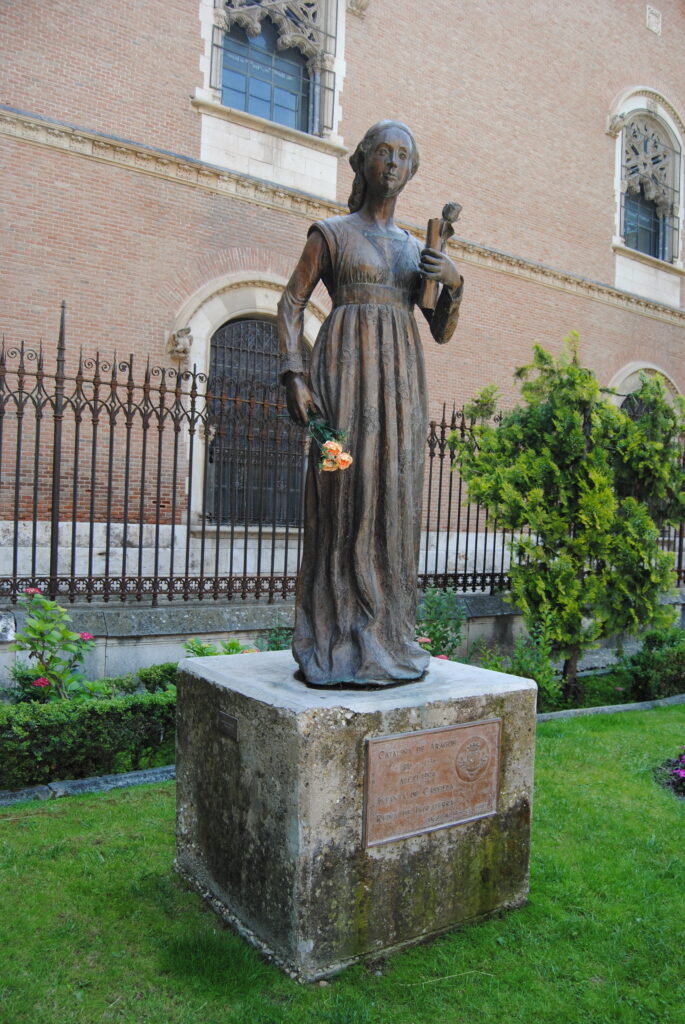
While the palace was not open during my visit, it was a delight to stroll around the grounds in this quiet and beautiful part of the city.
Regional Archaeological Museum of Madrid
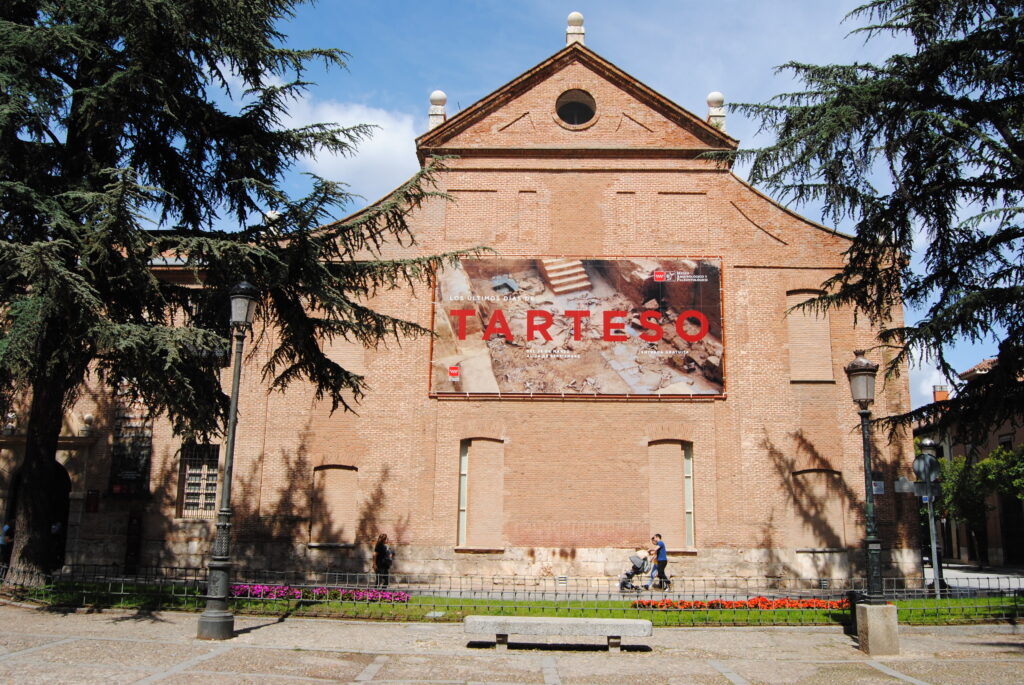
I love this archaeology museum. And although it is located in such a small city, it is home to an exceptional collection.
Housed in what was once a Dominican convent, this museum transports visitors back in time, sharing the story of Madrid through its astonishing artifacts and mosaics dating back to the Paleolithic Era.
We learn about the evolution of the landscape in this area and join ancient settlers as they establish a city here. Travelling through the centuries, we learn of the Roman invasion, life during the Middle Ages and the power of the Spanish Court.
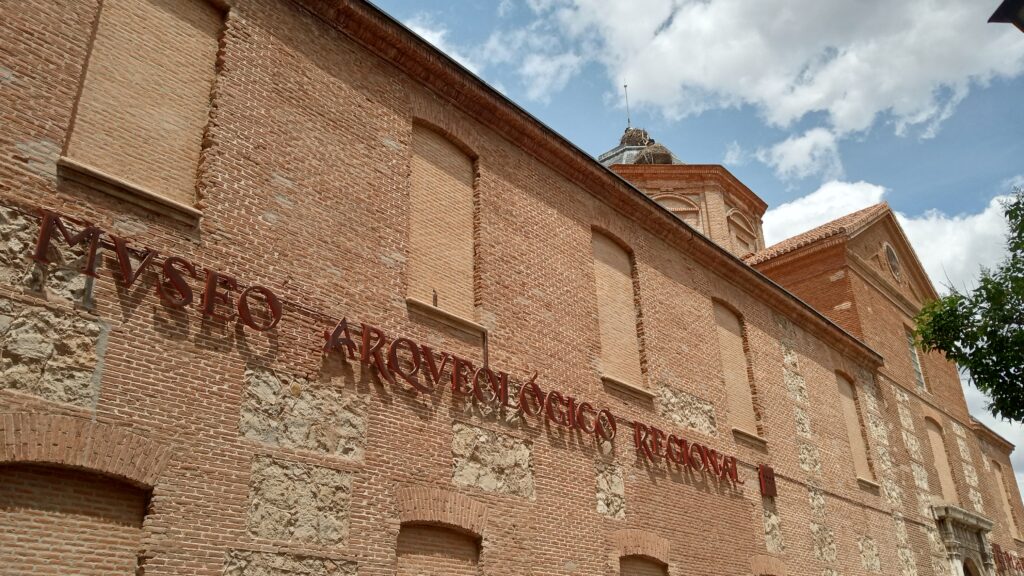
Although this museum’s collection contains typical artifacts like skulls, utensils and pottery, I love its small, manageable size and the lack of crowds. My favourite part of the museum is the cloister, home to beautiful mosaics. It’s such a peaceful place to sit for a while.
Alcalá University
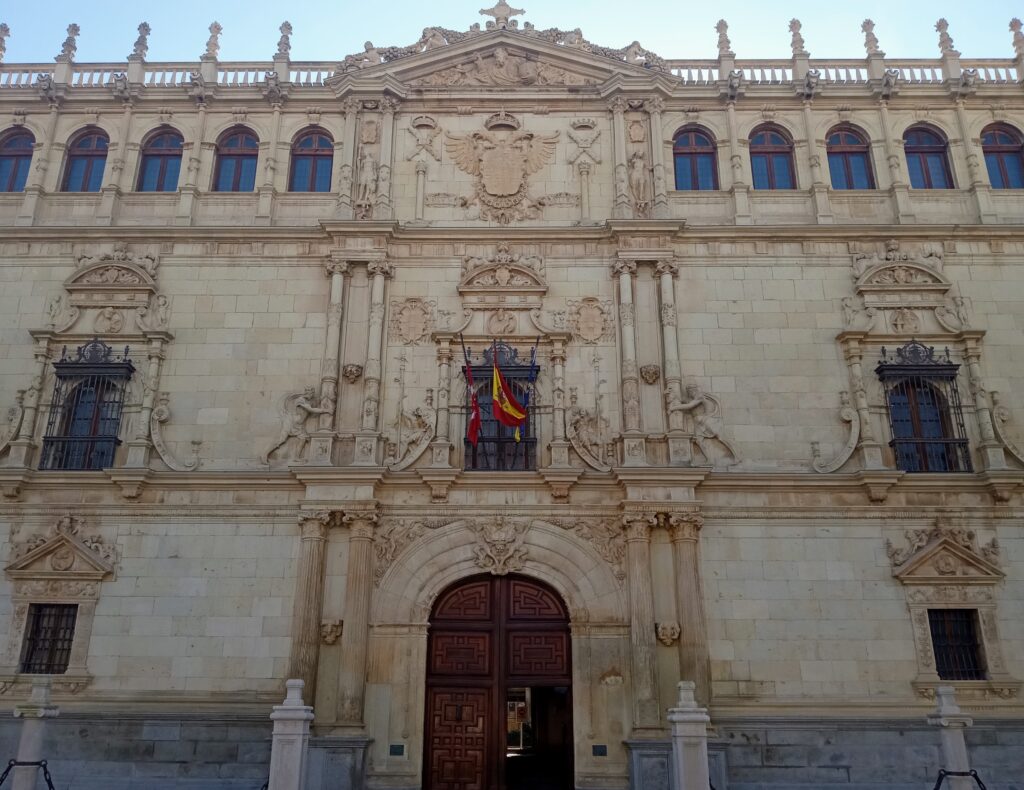
Many of the gorgeous historic buildings in the old center are part of Alcalá University, originally founded in 1293.
Nearly 30,000 students are currently enrolled in this university which places special emphasis on the humanities, Spanish-language literature and culture.
This is of special importance, as every year the university awards the Cervantes Prize, honouring the lifetime achievement of a Spanish writer.
Puerta de Madrid
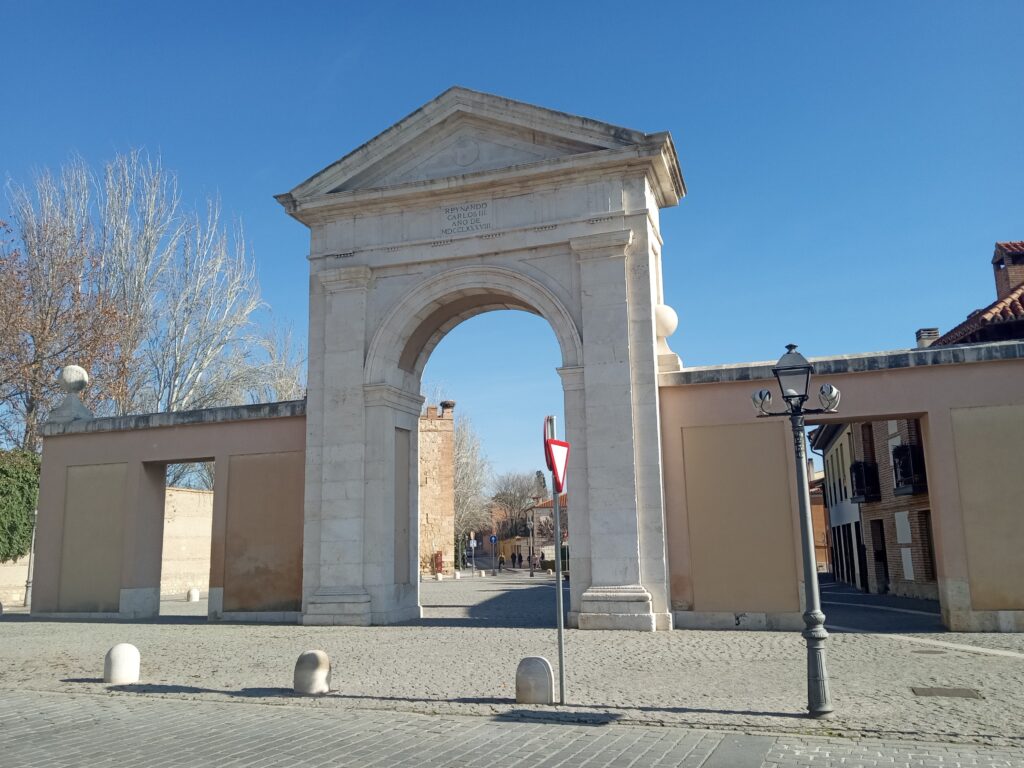
The Puerta de Madrid was built in 1788 and replaced one of the Medieval gates of the old walled city. This gate is made of stone and constructed in the neoclassical style.
If you pass through these gates from the modern part of the city, you will discover some remains of the old city walls.
Alcalá’s Cathedral and Churches
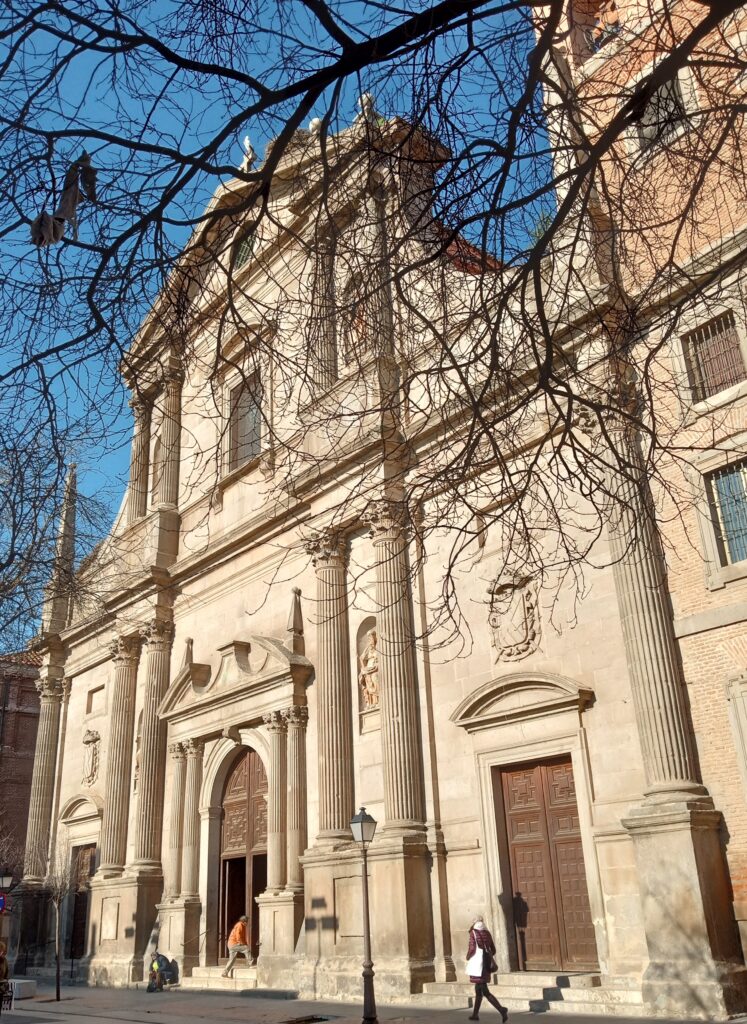
As in all Spanish cities, there is a large cathedral and no shortage of small churches. And all are worth visiting, should you find the doors open.
I always enjoy poking my head into a Spanish church. But sometimes they all start to look the same. However, one little church stands out in Alcalá de Henares. And is a great place to satisfy your sweet tooth.
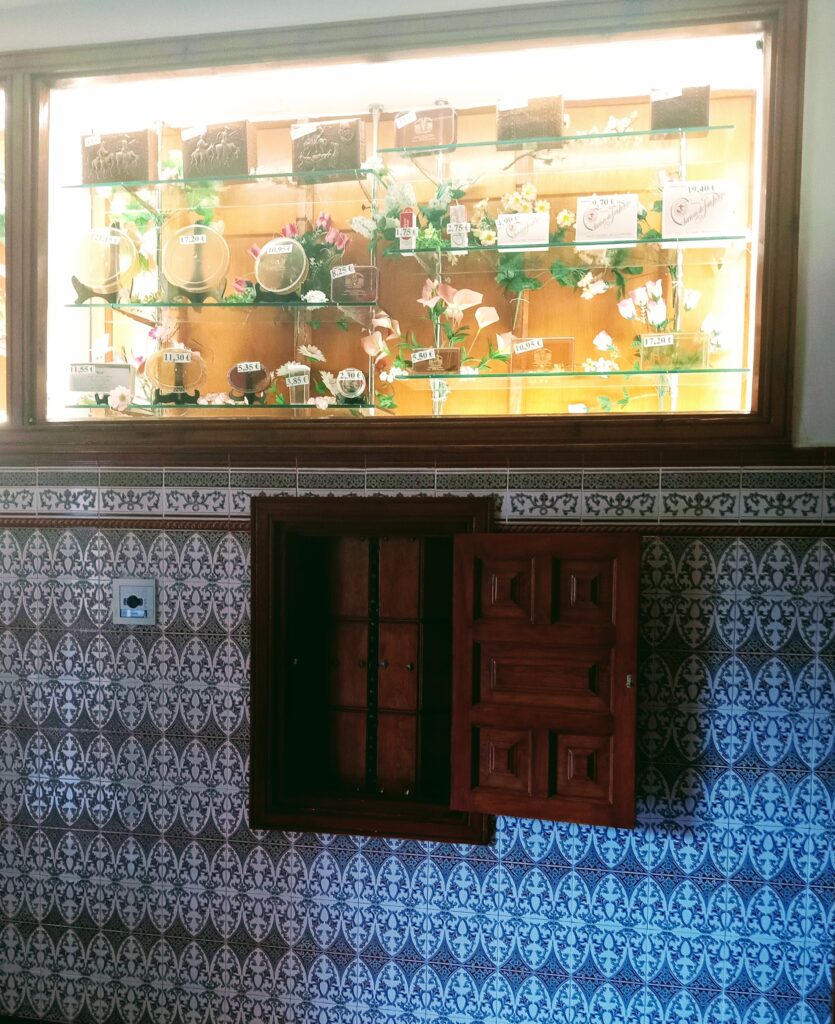
Almonds of Alcalá are one of the famous treats in the city. They are said to have been popular since the 18th Century.
The nuns of the Convent of the Clarisas of San Diego, who once worked as dressmakers, are now responsible for making these delicious almonds. Just pop into the church to see a cabinet full of sweets above a small cupboard. Press the button, place your order and voilà! your sweets will appear.
Laredo Palace
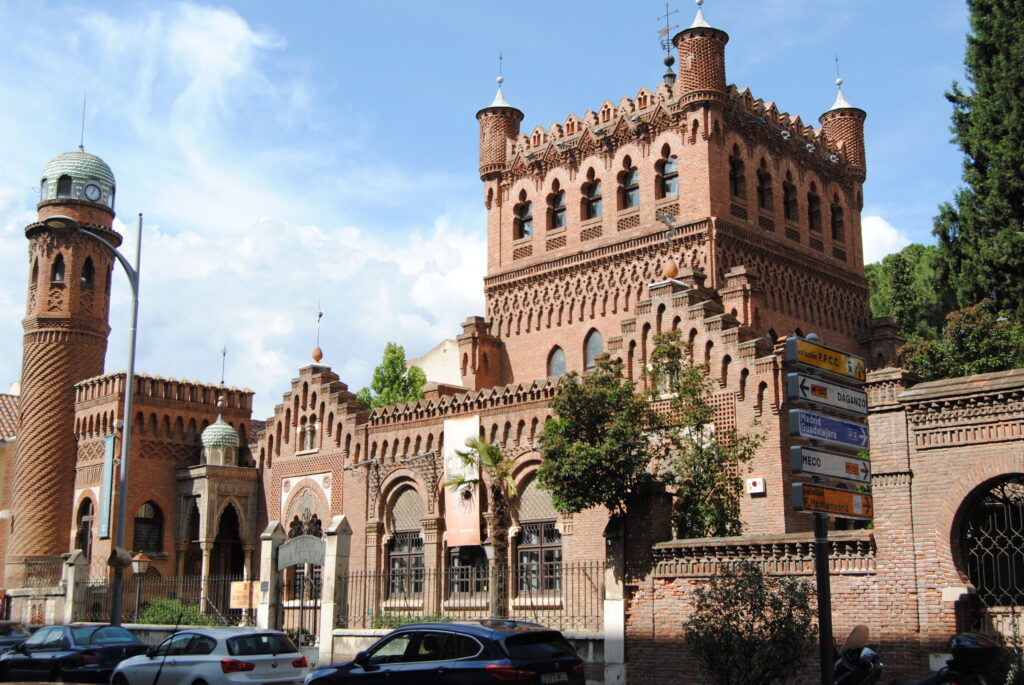
On your way into town from the Cercanías station, you will pass this eye-catching place, Laredo Palace. Built between 1880 and 1884, it was the residence of the artist and former Mayor, Manuel José Laredo y Ordoño, for whom it is named. A mish-mash of different features collide in this palace, now a museum dedicated to the 15th Century cardinal, Francisco Jiménez de Cisneros.
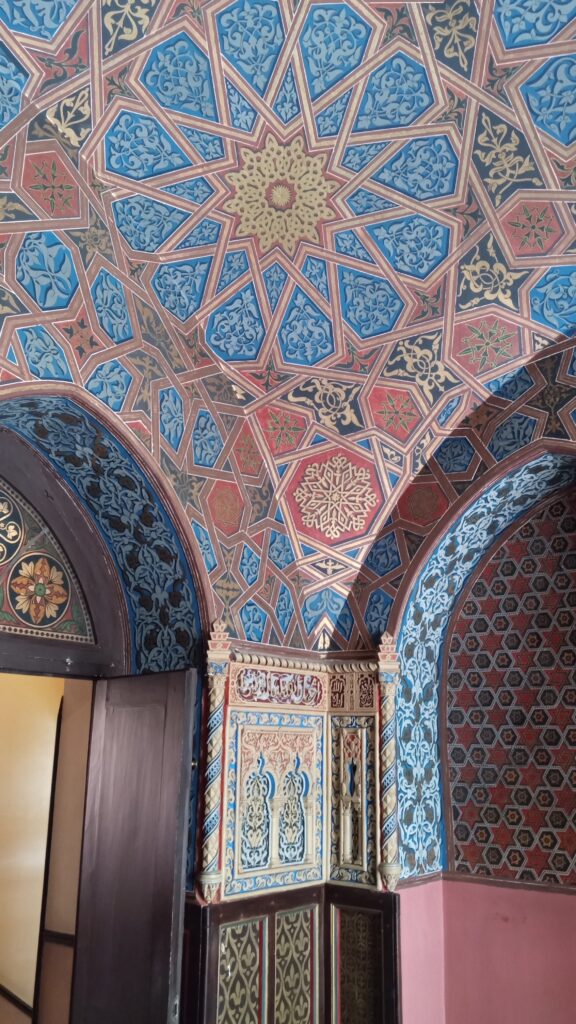
Various eras and trends inspired the tile work, frescoes and motifs. We can see nods to the Alhambra and Pompeii. And Gothic, Renaissance and Moorish styles are showcased in the art and architecture.
Anyone who loves the decorative arts will certainly enjoy this palace.
Plaza de 11 de Marzo
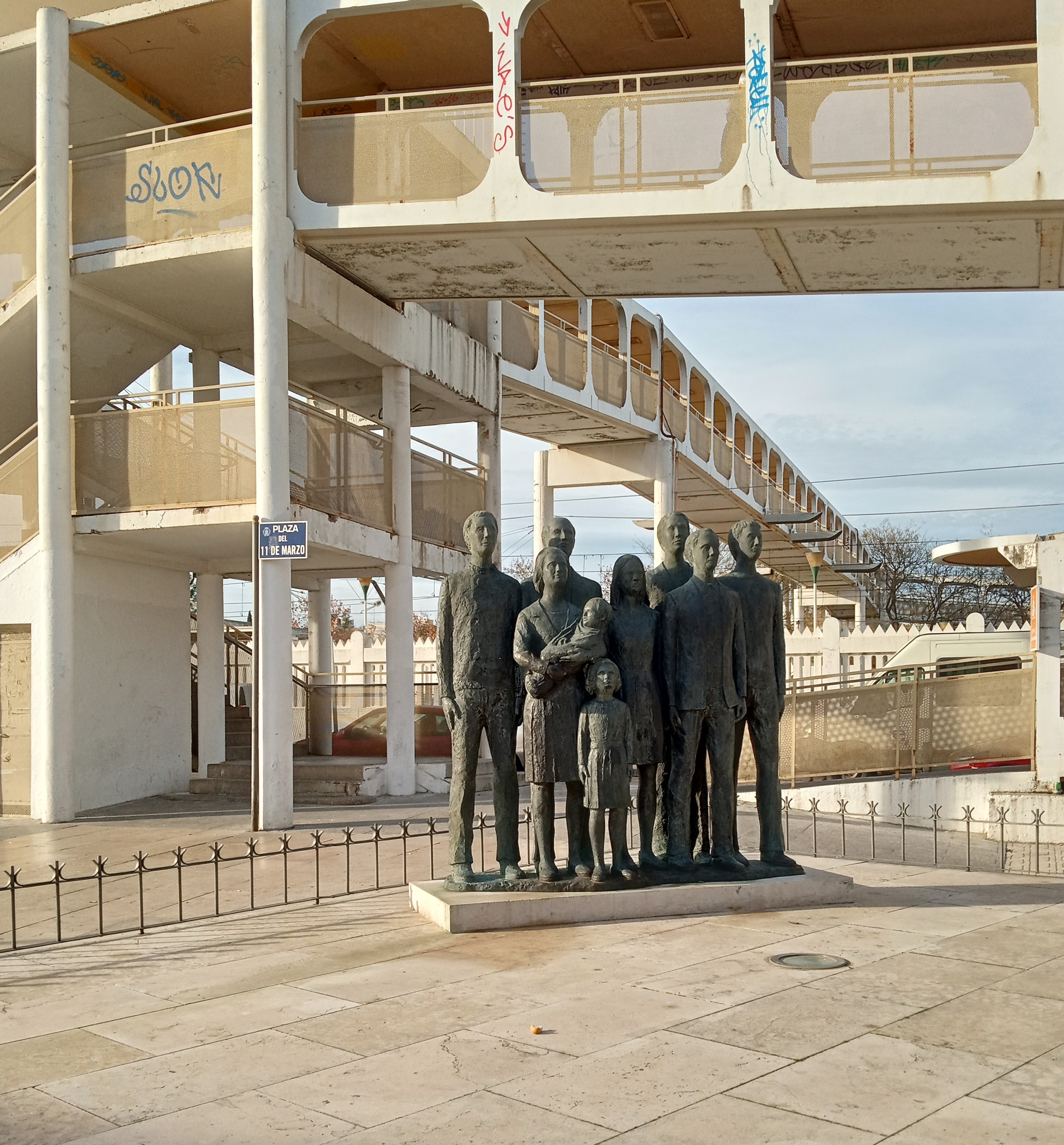
On March 11th, 2004, there was a coordinated attack on the Cercanías train system that killed 193 and injured 2000. It happened on this very line between Atocha Station and Alcalá de Henares.
To mark the 10th anniversary of this tragic event, known as 11-M, Plaza de la Estación was renamed Plaza del 11 de Marzo and this memorial commemorates the 27 residents of Alcalá de Henares who lost their lives and the dozens who were injured. You can see this memorial just outside of the station.
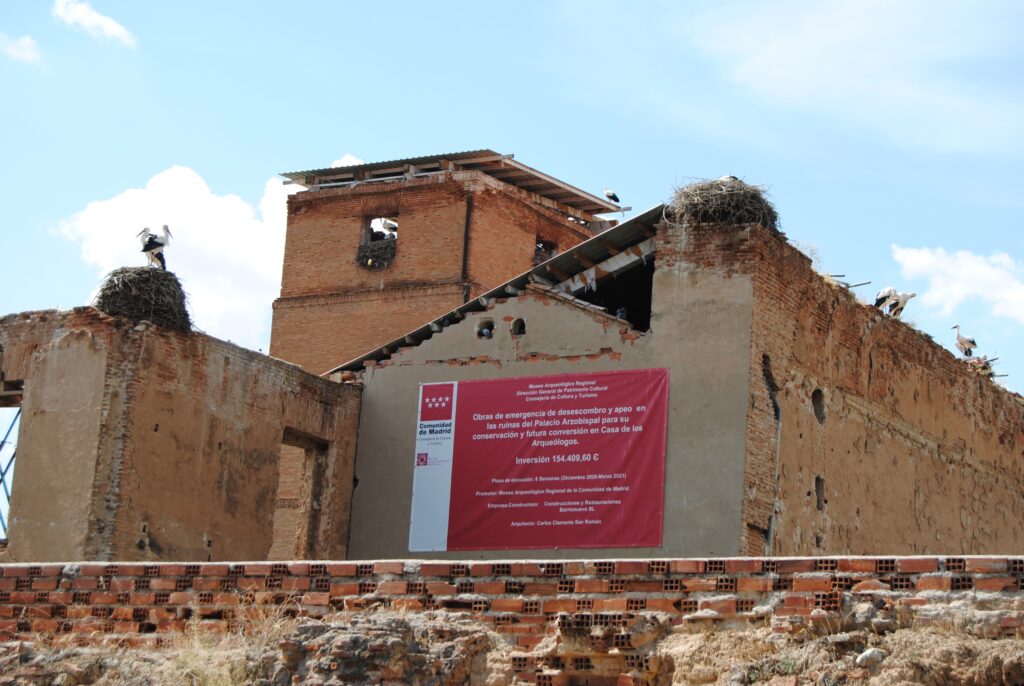
Alcalá de Henares is the perfect day trip for a quiet respite from the big city. Consider a visit here if you’re flying in or out of Madrid on your Camino. Although Alcalá is small and compact, it is rich with history and will leave you yearning to return.
Buen Camino!